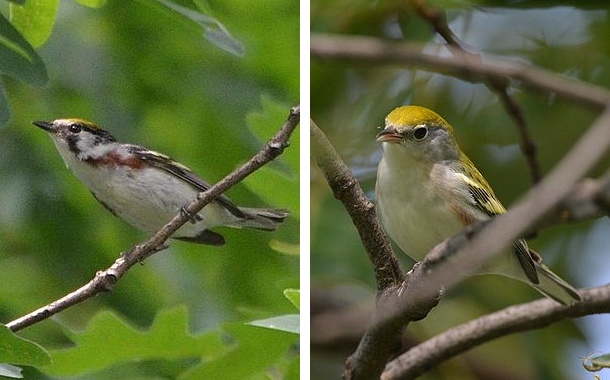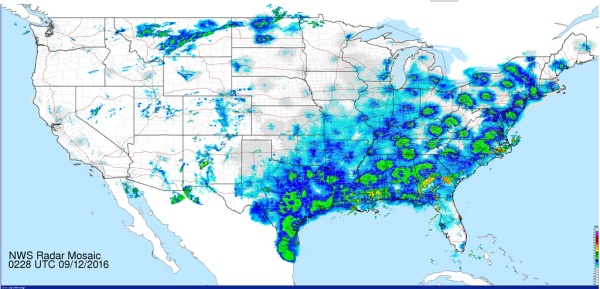
Finally! Last night’s north wind generated intense bird migration from the northeastern U.S. to Texas. Here’s the 10:30pm EDT radar mosaic. Wow!

This morning we’ll find lots of new arrivals from Pittsburgh to the Gulf Coast. Among them will be chestnut-sided warblers that no longer live up to their name.
In the spring (at left above) both sexes of the chestnut-sided warbler (Setophaga pensylvanica) have brownish red “chestnut” sides with a black eye line and malar stripes. Their undersides are clear white from throat to tail and they have wing bars, yellow wing patches, a yellow cap, and something we rarely notice — yellow backs with black stripes.
In the fall their black accents are gone and most are missing the chestnut sides. Instead they have white eye rings! The right hand photo shows this amazing transformation.
Fall chestnut-sided warblers retain their clear white throats and bellies, yellow wing bars, and their distinguishing characteristic — the yellow on top of their heads. The color is muted now to yellow-green and extends to the nape and back.
What happened to the chestnut sides? Adult males have a hint of chestnut, shown in the right hand photo, but the females and juveniles are missing it. And just to make you crazy, fall bay-breasted warblers have chestnut sides and yellowish heads — but no eye ring.
So don’t expect to find a chestnut-sided warbler today. Watch for the yellowish cap.
(chestnut-sided warbler comparison photos by Andy Reago & Chrissy McClarren via Wikimedia Commons. Click on these links to see the original photos in spring and fall)